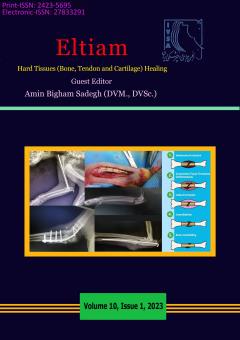-
-
List of Articles
-
Open Access Article
1 - the cartilage and cartilage healing in dogs and cats
iman farhangnia -
Open Access Article
2 - A Review of Structure and Mechanisms of Tendon Injury and Repair in Small Animals
Fatemeh Iraji Aboutorab Tabatabaei Naeini -
Open Access Article
3 - The healing process of bone lesions and fractures, effective treatment methods
Haniyeh yabandeh jahromi Abodol hamid Meymandi Parizi Alireza Shaikhzadeh -
Open Access Article
4 - Orthopedics examination of the fore limb in small animal
hamid reza moslemi navid Ehsani pour Faeze Emarloo -
Open Access Article
5 - Orthopedic examination of the hind limb in small animal
hamid reza moslemi Mahshid Farmand -
Open Access Article
6 - A review on external coaptation methods in small animal
pouriya almasi Aboutorab Tabatabaei Naeini -
Open Access Article
7 - External Skeletal Fixators in Small Animal
hamid reza moslemi navid Ehsani pour Faeze Emarloo -
Open Access Article
8 - Internal Fixation Methods of Bone Fractures in Small Animals
Arian Pouramin Seifollah Dehghani -
Open Access Article
9 - a review on on Juvenile Orthopedic disease in dogs and cats
Aref Ghashghaee Amin Bigham-Sadegh -
Open Access Article
10 - patellar luxation in dogs
Alireza Shaikhzadeh Amin Bigham-Sadegh -
Open Access Article
11 - An update to treatment of canine atopic dermatitis
Javad Khoshnegah
-
The rights to this website are owned by the Raimag Press Management System.
Copyright © 2017-2025







